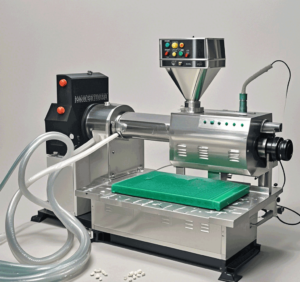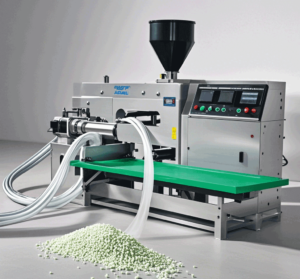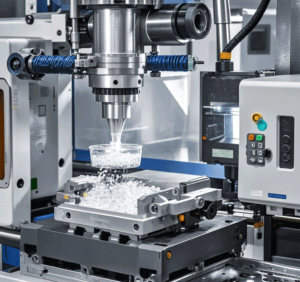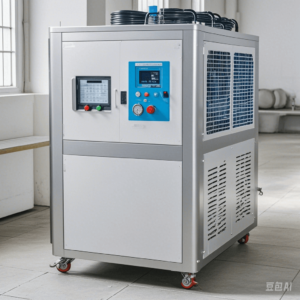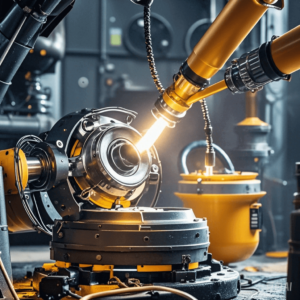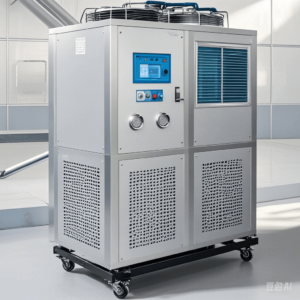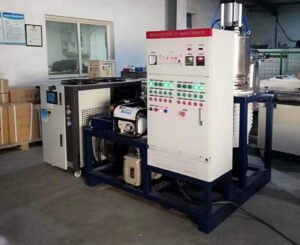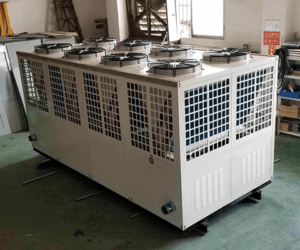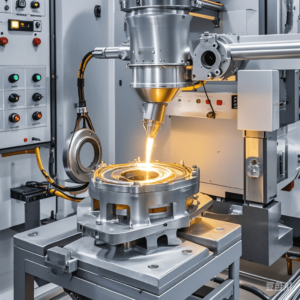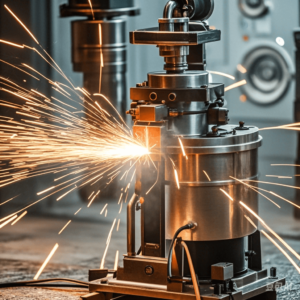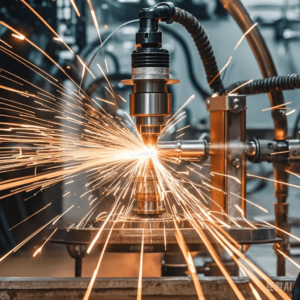Are you tired of sweltering temperatures ruining your swimming pool experience? Look no further – the ultimate guide to choosing the perfect water chiller for your swimming pool is here! Whether you are a homeowner or a pool maintenance professional, finding the right water chiller is essential for maintaining that refreshing swim all year round. In this comprehensive guide, we will walk you through the key factors to consider when selecting a water chiller that suits your needs. From the size and capacity to energy efficiency and installation requirements, we leave no stone unturned. We understand that finding the perfect water chiller can be overwhelming, but fear not! With our expert advice and industry insights, you’ll have all the tools you need to make an informed decision. Get ready to dive into a world of unparalleled chilling efficiency and transform your pool into a cool oasis. Say goodbye to overheated water and say hello to endless hours of swimming enjoyment. Let’s get started!
Importance d'un refroidisseur d'eau pour piscine
Un refroidisseur d’eau n’est pas seulement un luxe pour les propriétaires de piscine ; c'est devenu une nécessité dans les régions où les températures montent en flèche pendant les mois d'été. La fonction principale d’un refroidisseur d’eau est d’abaisser la température de l’eau de la piscine, la rendant ainsi plus confortable pour la baignade. Lorsque la température de l’eau dépasse un certain niveau, elle peut devenir peu attrayante et même dangereuse pour les nageurs. Les températures élevées peuvent entraîner la croissance de bactéries et d’algues, créant un risque pour la santé et nécessitant des nettoyages et des traitements chimiques plus fréquents. En investissant dans un refroidisseur d’eau, vous garantissez un environnement de baignade sûr et agréable pour votre famille et vos amis tout au long des mois chauds.
De plus, le confort de nager dans une eau plus fraîche ne peut être surestimé. Imaginez entrer dans une piscine qui ressemble à une oasis rafraîchissante plutôt qu'à un bain chaud. Un refroidisseur d'eau vous permet de maintenir votre piscine à une température confortable, améliorant ainsi l'expérience globale de la baignade. Ceci est particulièrement important pour les familles avec enfants ou les personnes qui aiment nager pour faire de l'exercice. Une température de l’eau constante peut encourager une utilisation plus fréquente de la piscine, offrant ainsi des bienfaits pour la santé et un espace de loisirs amusant.
Furthermore, a well-maintained pool with cooler water can also increase the longevity of your pool materials and equipment. High water temperatures can lead to increased evaporation rates, which can cause chemical imbalances and damage to pool surfaces and fixtures. By regulating the water temperature, chillers help preserve the integrity of your pool, ultimately saving you money on repairs and maintenance in the long run. As such, a water chiller is an investment that pays off in comfort, safety, and the longevity of your pool.
Different types of water chillers
When it comes to water chillers, there are several types available, each designed to cater to different pool sizes and usage patterns. The most common types include air-cooled chillers, water-cooled chillers, and heat pump chillers. Air-cooled chillers are the most prevalent option for residential pools. They work by drawing in air, cooling the water through a refrigerant cycle, and then expelling warm air back into the environment. These chillers are relatively easy to install and maintain, making them a popular choice for homeowners.
Water-cooled chillers, on the other hand, use water from an external source, such as a well or river, to cool the pool water. While they are generally more efficient than air-cooled models, they require more complex installation and may not be practical for every homeowner. These chillers are often used in commercial settings or larger residential pools where efficiency is paramount, and the initial investment can be justified by lower operating costs.
Heat pump chillers are another option, functioning similarly to air conditioners by extracting heat from the pool water and releasing it outside. They are highly energy-efficient and can be used for both heating and cooling purposes. However, they perform best in moderate climates, as their efficiency diminishes in extremely hot or cold weather. Understanding the differences between these types of chillers is essential for making an informed decision that aligns with your specific pool needs and local climate conditions.
Factors to consider when choosing a water chiller for your swimming pool
Choosing the right water chiller for your swimming pool involves careful consideration of several key factors. One of the most crucial aspects is the size of your pool. The cooling capacity of a chiller is measured in BTUs (British Thermal Units), and it is essential to select a model that can effectively cool the volume of water in your pool. A chiller that is too small will struggle to maintain the desired temperature, while one that is excessively large will lead to higher energy costs and inefficient operation.
Another factor to consider is the climate of your area. If you live in a region with extreme temperatures, you may need a more robust system that can handle the heat. Additionally, consider how often you use your pool and during which seasons. For instance, if you plan to swim frequently in the summer, investing in a high-capacity chiller might be worthwhile. On the other hand, if your swimming seasons are limited, a smaller unit may suffice.
Les exigences d’installation jouent également un rôle important dans votre processus décisionnel. Certains refroidisseurs nécessitent des installations électriques spécifiques ou une plomberie supplémentaire, ce qui peut augmenter les coûts d'installation. Il est essentiel de consulter un professionnel pour évaluer la configuration actuelle de votre piscine et déterminer quelles modifications, le cas échéant, sont nécessaires pour une nouvelle installation de refroidisseur. En prenant en compte ces facteurs (taille de la piscine, climat, utilisation et exigences d'installation), vous pouvez affiner vos options et trouver le refroidisseur d'eau parfait pour vos besoins.
Dimensionner correctement votre refroidisseur d'eau
Proper sizing of your water chiller is vital for optimal performance and energy efficiency. The first step in sizing is to calculate the volume of your swimming pool in gallons. To do this, you can use the formula: length × width × average depth × 7.5. This calculation will give you the total gallon capacity of your pool, which is essential for determining the appropriate BTU rating for your chiller. Generally, a good rule of thumb is to have a chiller that can remove 1 BTU per gallon of water per hour for every degree Fahrenheit you want to lower the temperature.
For example, if your pool holds 20,000 gallons of water and you want to cool it from 85°F to 78°F, you need to remove 7 degrees of heat. Therefore, you would require a chiller with a cooling capacity of approximately 140,000 BTUs (20,000 gallons × 7 degrees). However, it is also important to consider factors such as the pool’s exposure to sunlight, wind, and usage patterns, as these can affect heat gain and cooling needs.
De plus, il est conseillé de consulter des professionnels qui pourront vous aider à analyser votre situation spécifique et vous assurer que vous sélectionnez un refroidisseur avec la bonne capacité. Le surdimensionnement d'un refroidisseur peut entraîner des cycles courts, ce qui réduit l'efficacité et augmente l'usure de l'unité. À l’inverse, un refroidisseur sous-dimensionné aura du mal à maintenir les températures souhaitées et pourrait entraîner une consommation d’énergie plus élevée. Ainsi, un dimensionnement précis de votre refroidisseur d’eau est crucial pour atteindre un équilibre entre performances et efficacité énergétique.
Considérations sur l’efficacité énergétique et les coûts
Energy efficiency is a significant factor when selecting a water chiller for your swimming pool. Operating a chiller can consume substantial electricity, especially during peak summer months when demand is highest. Therefore, it is essential to consider the Energy Efficiency Ratio (EER) of the chiller, which measures the cooling capacity relative to energy consumption. A higher EER indicates a more energy-efficient unit, which can lead to lower electricity bills over time.
De plus, le prix d’achat initial du refroidisseur ne représente qu’une partie de l’équation globale du coût. Il est crucial de prendre en compte les coûts opérationnels à long terme associés au fonctionnement du refroidisseur. Les unités qui peuvent avoir un coût initial inférieur pourraient finir par être plus chères à long terme si elles sont moins efficaces. Par conséquent, il est sage d’investir dans une unité de qualité qui peut avoir un coût initial plus élevé mais offre une meilleure efficacité énergétique et une meilleure fiabilité.
In addition to the chiller itself, don’t forget to account for installation costs, maintenance expenses, and any necessary modifications to your pool infrastructure. These additional costs can vary significantly depending on the complexity of the installation and the type of chiller chosen. By carefully evaluating both the upfront and ongoing costs, you can make a more informed decision that aligns with your budget while ensuring that your pool remains a refreshing retreat all summer long.
Popular water chiller brands in the market
When it comes to selecting a water chiller, the brand can play a significant role in the quality and reliability of the unit. Some of the most reputable brands in the market include AquaCal, Arctic Heat Pumps, and Hayward. AquaCal is known for its wide range of efficient heat pumps and chillers that cater to both residential and commercial applications. Their units are often praised for their durability and innovative technology, making them a popular choice among homeowners.
Arctic Heat Pumps offers a selection of both heating and cooling solutions, focusing on energy efficiency and environmentally-friendly refrigerants. Their models often come with advanced features such as digital controls and smart technology integration, allowing users to optimize their pool’s temperature with ease. The brand has built a solid reputation for reliability and excellent customer service, which is crucial when making such an investment.
Hayward is another well-known brand that provides a variety of pool equipment, including water chillers. They offer efficient models that are designed for easy integration with existing pool systems. Hayward’s chillers are recognized for their advanced technology and user-friendly interfaces, making them a favorite among pool professionals. When considering a chiller, it’s wise to research these brands and read reviews to find the best fit for your specific needs and budget.
Maintaining and servicing your water chiller
Un entretien régulier est essentiel pour que votre refroidisseur d’eau fonctionne efficacement et prolonge sa durée de vie. L’une des tâches de maintenance les plus critiques consiste à nettoyer les serpentins du condenseur du refroidisseur, qui peuvent accumuler de la saleté et des débris au fil du temps. Un serpentin sale peut réduire considérablement l’efficacité et la capacité de refroidissement de l’unité, entraînant des coûts énergétiques plus élevés. Il est conseillé d'inspecter et de nettoyer les serpentins au moins une fois par saison, ou plus fréquemment si vous habitez dans une zone poussiéreuse ou si vous avez de la végétation à proximité.
En plus de nettoyer les serpentins, vous devez également vérifier régulièrement le filtre à eau et le remplacer si nécessaire. Un filtre obstrué peut entraver le débit d’eau et réduire l’efficacité du refroidisseur. De nombreux modèles sont livrés avec un filtre amovible qui peut être facilement nettoyé ou remplacé, ce qui rend cette tâche facile pour les propriétaires de piscine. De plus, il est essentiel de surveiller les niveaux de réfrigérant dans le système, car de faibles niveaux peuvent indiquer une fuite ou d’autres problèmes pouvant nécessiter l’attention d’un professionnel.
Scheduling annual professional servicing is also a wise decision. A qualified technician can perform a comprehensive inspection, identify potential problems, and ensure that your chiller operates at peak performance. Regular servicing not only helps prevent major breakdowns but also keeps your warranty valid, which can save you money in case of repairs. By staying proactive with maintenance and servicing, you can enjoy a reliable and efficient water chiller for many years to come.
Cost of installation and operation
Le coût d'installation d'un refroidisseur d'eau peut varier considérablement en fonction de plusieurs facteurs, notamment le type de refroidisseur sélectionné, la taille de votre piscine et les modifications nécessaires à la configuration de votre piscine existante. En moyenne, les propriétaires peuvent s’attendre à payer entre 2 000 $ et 5 000 $ pour l’achat et l’installation d’un refroidisseur d’eau résidentiel. Les refroidisseurs refroidis par air ont tendance à être plus abordables que les unités refroidies par eau, qui nécessitent souvent des travaux de plomberie et d'électricité plus importants.
Outre les coûts d’installation, il est important de prendre en compte les coûts opérationnels associés au fonctionnement d’un refroidisseur d’eau. Ces coûts comprennent principalement la consommation d'électricité, qui peut fluctuer en fonction des tarifs énergétiques locaux et de l'efficacité du refroidisseur. Comme mentionné précédemment, le choix d’un modèle avec un EER élevé peut réduire considérablement les coûts énergétiques au fil du temps. En moyenne, les propriétaires peuvent s'attendre à dépenser entre 300 $ et 1 000 $ par an en électricité pour leur refroidisseur, en fonction de l'utilisation et des tarifs locaux.
Additionally, don’t overlook maintenance costs. While regular maintenance can prevent costly repairs, it’s still important to budget for routine servicing, cleaning supplies, and any parts that may need replacement over time. By considering all these factors—installation, operational, and maintenance costs—you can develop a comprehensive budget that encompasses the full lifecycle of your water chiller, ensuring that you are prepared for both the initial investment and ongoing expenses.
Tips for extending the lifespan of your water chiller
Prolonger la durée de vie de votre refroidisseur d'eau nécessite une combinaison d'entretien régulier et de pratiques d'utilisation intelligentes. L’un des moyens les plus simples, mais aussi les plus efficaces, de prolonger la durée de vie de votre refroidisseur consiste à garder la zone autour de l’unité exempte de débris. Assurez-vous qu'il y a une circulation d'air suffisante autour du refroidisseur, car une circulation d'air restreinte peut entraîner une surchauffe et réduire l'efficacité. Coupez tout feuillage ou obstacle susceptible d'entraver la circulation de l'air, en particulier pendant les mois les plus chauds lorsque l'appareil travaille le plus dur.
Another tip is to monitor the water chemistry in your pool regularly. Maintaining balanced water chemistry is vital not only for swimmer safety but also for the overall health of your pool equipment. High levels of chlorine or unbalanced pH can lead to corrosion and damage to the chiller, so ensure that you are testing and adjusting your pool’s chemical levels as needed. Using a quality water conditioner can also help protect your equipment from scale buildup and corrosion.
Enfin, pensez à investir dans une couverture de refroidisseur pendant la basse saison ou lorsque la piscine n'est pas utilisée. Les housses peuvent protéger votre appareil des éléments, tels que la pluie, la neige et les débris, réduisant ainsi l'usure. De plus, si vous prévoyez de ne pas utiliser votre piscine pendant une période prolongée, consultez les instructions de votre fabricant pour hiverner le refroidisseur afin de vous assurer qu'il reste dans un état optimal. En suivant ces conseils, vous pouvez prolonger considérablement la durée de vie de votre refroidisseur d’eau et maintenir son efficacité pour les années à venir.
Conclusion et réflexions finales
Choosing the perfect water chiller for your swimming pool is a crucial decision that can enhance your swimming experience and prolong the life of your pool equipment. By understanding the importance of a water chiller, the different types available, and the key factors to consider during the selection process, you can make a more informed choice. From sizing your chiller correctly to evaluating energy efficiency and costs, each decision plays a role in the overall performance of your cooling system.
As you embark on your journey to select the ideal water chiller, remember to research popular brands, plan for installation and maintenance costs, and implement tips for extending the lifespan of your unit. With the right water chiller, you can transform your pool into a comfortable oasis that is enjoyable year-round.
In conclusion, whether you’re a seasoned pool owner or a newcomer to the world of pool maintenance, investing in a quality water chiller is a decision that pays off in comfort, safety, and enjoyment. Say goodbye to sweltering temperatures and hello to a refreshing swim every time you dip into your pool. With the information provided in this guide, you are now equipped to make the best choice for your swimming pool needs. Dive in and enjoy the cool waters!

